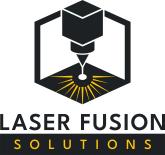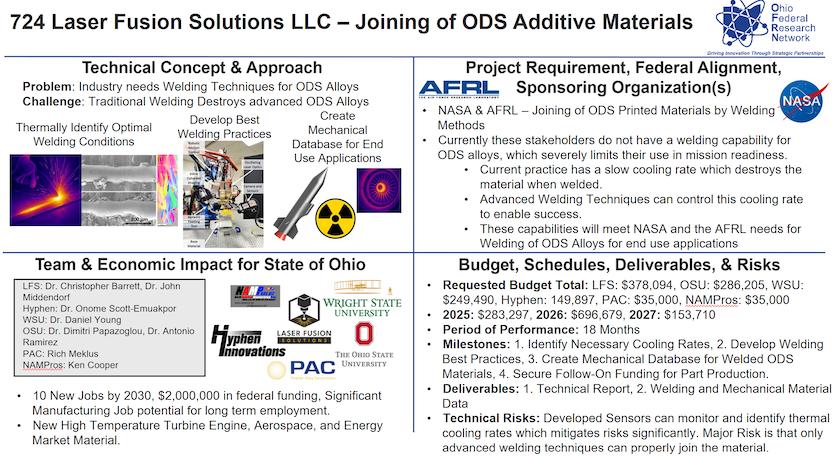Area of Interest (AOI): 7. Advanced Materials Technology – Critical Materials Supply for Aerospace
Innovation: This proposal combines the leading experts on one specific ODS material of interest (GRX-810) and the leading experts in advanced welding technologies. The team will advance the technology readiness level of the material by utilizing advanced sensing capabilities combined with the LPBF and advanced welding equipment. This will allow the team to track the cooling rates of the material and ensure the welding methods are successful. The team is proposing to use laser beam welding (LBW), friction stir welding (FSW), and cryogenically cooled welding to join the material together. It is anticipated that different welding techniques will be required for different types of welding. By utilizing these techniques, the team will be able to control the cooling rates and successfully join the material.
Objectives: The project objectives are to:
1. Identify the required cooling rates for the material via advanced sensor technologies and metallurgical inspection.
2. Identify the optimal methodologies for welding the material together.
3. Develop an initial database of mechanical information on the welded GRX-810 material.
Background: Materials manufacturing has always focused on the blending of various base chemicals together. From the earliest days of Alchemy to the advanced science of today, materials make the world go around. Oxide Dispersion Strengthened (ODS) alloys were developed by mixing ceramic nanoparticles (such as alumina) in with metal powder particles. By rapidly melting and cooling them in laser powder bed fusion (LPBF) additive manufacturing (AM) machines, NASA scientists were able to create a new class of materials. The oxides remain dispersed throughout the metal and provide a significant strength at elevated temperatures. A problem was soon discovered as these materials need the rapid cooling to keep the oxides dispersed instead of drifting out to the grain boundaries and clumping together. When this occurs, the material strength is significantly weakened compared to standard metal. Most metallic components are joined in a larger assembly often utilizing welding. Welding methods traditionally have slower cooling time when compared to LPBF. Therefore, these materials have been difficult to weld, which is limiting their adoption by the wider industrial community.

